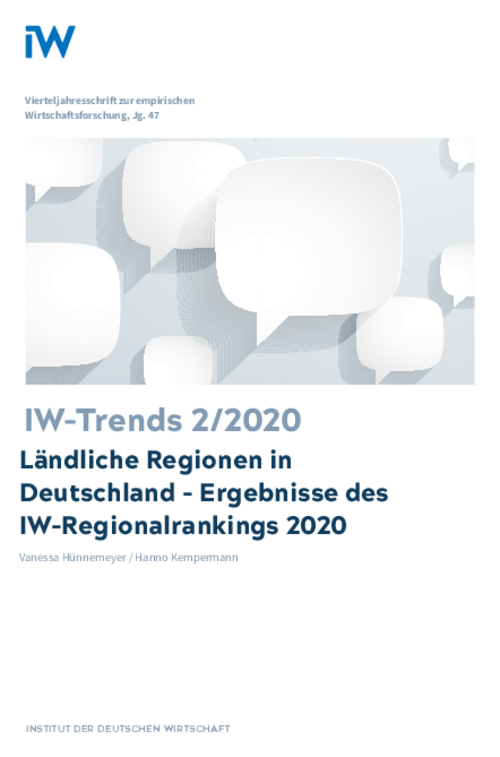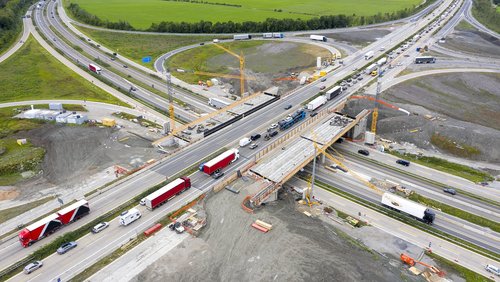Rural regions have historically played an important role in securing Germany’s prosperity and growth. It is here that a significant number of the country’s hidden champions are to be found, inconspicuous manufacturers whose innovativeness and high-quality production are nonetheless the hallmark of the German business model.

Rural Regions in Germany: Results of the IW Regional Ranking 2020
IW-Trends

Rural regions have historically played an important role in securing Germany’s prosperity and growth. It is here that a significant number of the country’s hidden champions are to be found, inconspicuous manufacturers whose innovativeness and high-quality production are nonetheless the hallmark of the German business model.
The strength of rural areas is clearly shown by their position, by both level and growth, at the top of the IW ranking of all 401 counties and independent cities in Germany. While Munich county, the rural area which surrounds the independent metropolis, once again dominates the ranking in absolute terms, Mainz-Bingen, a county on the west bank of the Middle Rhine, heads the list for growth for the first time. Due to the specific nature of their economic infrastructure, however, rural regions react more sensitively to developments in society as a whole. As a result of migration losses, for instance, shortages of skilled labour are felt more acutely there than in booming conurbations. The IW Regional Ranking provides a differentiated view of how rural and urban areas are developing, and its interregional comparison facilitates the development of policies aimed at achieving the equal standard of living demanded by Germany’s constitution while at the same time taking account of the different ways regions develop.

Vanessa Hünnemeyer / Hanno Kempermann: Ländliche Regionen in Deutschland - Ergebnisse des IW-Regionalrankings 2020
IW-Trends

More on the topic

Challenges for the debt brake
In 2019, Bardt et al. (2019) initially presented a comprehensive estimate of the unmet public investment needs in Germany not covered in household planning at the time, totaling around €460 billion over ten years.
IW
Corporate Insolvencies on the Increase
After a prolonged decline, the number of corporate insolvencies has begun to rise again. The slight increase in 2022 could be interpreted as a step towards normalisation after the sharp drop experienced during the 2020/21 Covid19 pandemic.
IW